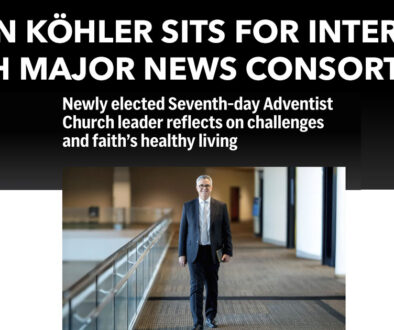News Feature: The Power of Church Planting
By Matt Stockdale, February 3, 2016: The concept for Triad Adventist Fellowship (TAF) in Greensboro (North Carolina) began a few years ago in our young adult Sabbath School class as we discussed ways to help reach those who were no longer attending church, those who felt out of place at church, and those who’d had a negative experience with church in the past.
What we learned from this discussion is there are many who want to be connected with the love of Jesus whom we will never reach using a traditional approach. We knew we had to change our methods to effectively reach them.
A core group of 11 passionate individuals began meeting weekly to brainstorm and strategize the outreach ministry that eventually became TAF. This core group met for more than nine months before any actual worship service started. That was key to organizing, setting goals, and putting the vision into action. The prayers and dedication of this group made TAF happen.
Church planting isn’t for the weak and undetermined. We faced many challenges along the way, but we knew we were following God’s leading to reach those who might never set foot in a traditional church setting.
Many church members questioned our motives and discouraged our efforts. Our service is not traditional, our music is contemporary, and our style is casual. When something is different, it can cause some tension. But, we knew we were being led to this ministry, and we knew there was a need for it, so that kept us focused on the most important thing: creating an environment where we could share the love of Jesus with those who needed it the most.
To support us in our journey, we attended several church-planting conferences at the conference, union conference and national levels. These were instrumental in helping us focus on what needed to be done in order to start a successful church plant.
As plans for TAF progressed, we were blessed to form a relationship with a local Sunday-keeping church that allowed us to rent their facility on Saturdays. They were centrally located in the Triad area (Greensboro, Winston-Salem and High Point, North Carolina), so that made it convenient for people to come from many areas to our church. They have a contemporary worship service, with a stage and worship theater set up in a warehouse facility, so it was the perfect setting for our church plant.
Our core group prayed for many months over our mission statement, vision statement, and core values for TAF. The vision statement we developed is, “To provide the Piedmont Triad with a Seventh-day Adventist community that presents Jesus Christ to the disconnected in a creative, authentic, and caring environment where everyone can grow to their full potential.” Our mission statement is simple, “To present the love and saving grace of Jesus Christ.” We want to encourage a community of grace-filled followers who are led by authentic Christians who help to unify their brothers and sisters in spiritual growth, while remaining culturally relevant to the surrounding area.
TAF officially opened its doors on July 5, 2014. The church-planting experts told us that lay-led church plants never reach 100 people in attendance. We were thrilled to be able to exceed that number for the first time on August 2, 2014. We’ve seen steady growth, with attendance consistently more than 120 since that time.
One thing that makes TAF unique is our fellowship. We want people to feel connected and to have an authentic relationship with Jesus, as well as with each other. TAF provides breakfast each Sabbath from 10:15 a.m. until 11 a.m. for anyone from the community who wants to join us. We also provide a full fellowship luncheon each week starting at 12 p.m. Many people from the community, who would not normally attend a church, have come for the food and stayed because of the fellowship. Although this is sometimes inconvenient for those preparing food, we have found that the fellowship is the glue that has helped to connect our members and visitors.
Another thing that makes TAF unique is our community service and outreach projects to our local community. TAF participates in monthly community service projects, such as distributing backpacks full of school supplies to underprivileged children, feeding the homeless at our local shelters, providing hygiene kits to those in need, and handing out scarves, gloves, hats, and socks in the winter to the homeless community and families in domestic violence shelters. These are just a few of the ways we try to show Jesus’ love to those in our area who are in need.
If you are traveling in North Carolina or live near us, we invite you to join us at TAF any time. We are sure that you will feel the love of Jesus through those of us at TAF who are committed to serving Him.
Editor’s Note: TAF has the status of a “company” in the Carolina Conference of the Adventist denomination. The official membership includes 82 people. A “company” in the Adventist organization is a congregation that is new and has not yet been conferred full recognition in the conference sisterhood of churches, although companies generally operate just like any other local church and the members may not even be aware of the status. TAF meets on Sabbaths at 705 Sunshine Way, Greensboro, Zip Code 27409. It is a good example of a new generation of Adventist congregations being started in many places across North America and around the world.
Matt Stockdale is employed as an assistant district attorney in Guilford County, North Carolina. Dr. Ron C. Smith, the president of the Southern Union Conference, describes Matt as “a highly effective minister” and asks people to pray for the TAF team. “God is doing an amazing work through their ministry,” he said. Adventist Today thanks Dr. Smith for giving us permission to republish this story from Southern Tidings.



